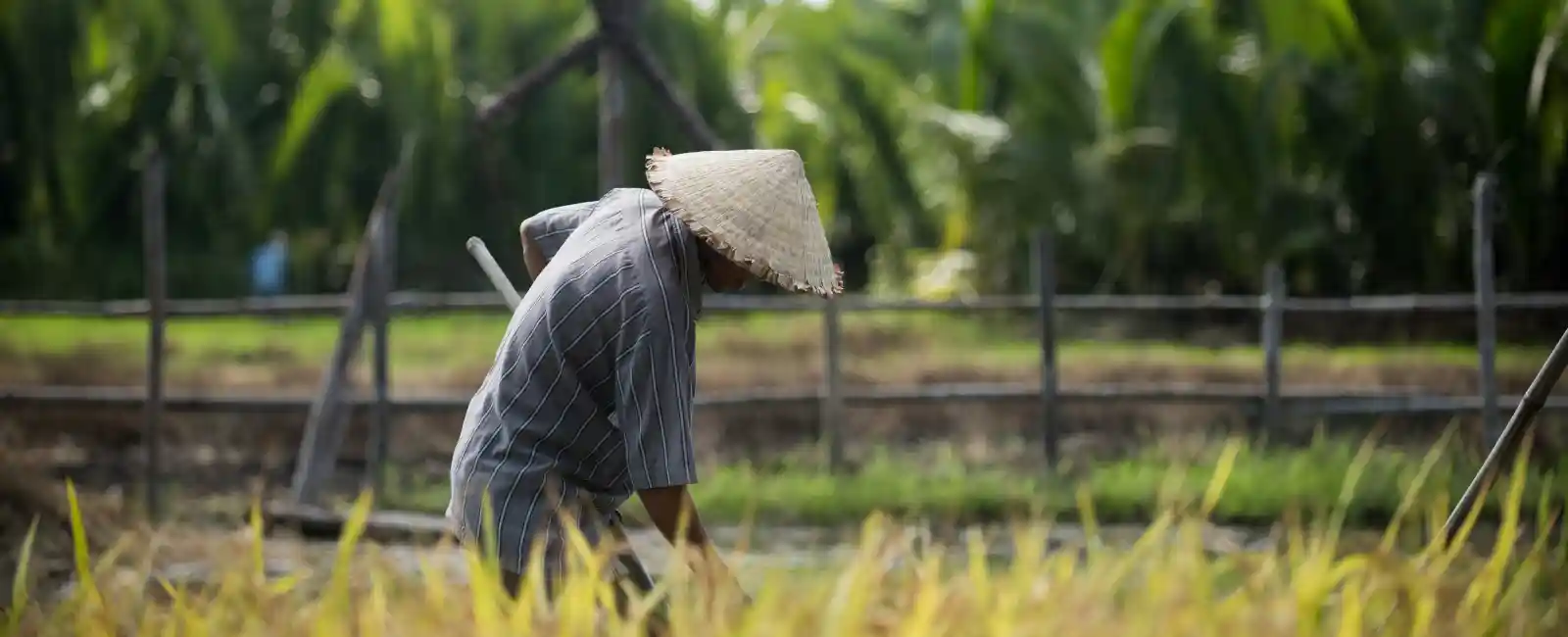Vietnam boasts bustling cities and breathtaking landscapes. The rural areas offer a unique and enriching experience. Tourists seeking authentic Vietnamese culture must visit the countryside. This guide explores the heart of rural life in Vietnam. You’ll find all the information needed for your visit. Learn about daily routines of local farmers. Explore picturesque landscapes and engage in cultural activities. This post covers everything you need to know.

Introduction to Rural Life in Vietnam
Rural life in Vietnam showcases traditions, customs, and natural beauty. Rapid modernization has not touched these areas. The countryside offers rich cultural experiences. You’ll notice a slower pace of life and warm hospitality. Stunning scenery stretches as far as the eye can see. Villages are surrounded by lush rice paddies and winding rivers. Water buffaloes plow the fields, captivating many visitors. Children play traditional games in the open spaces.
Every corner of rural Vietnam tells a story. Ancient temples nestle in the hills. Bustling morning markets sell fresh produce and handmade goods. Traditional music fills the air with melodic charm. Engage with locals to learn age-old farming techniques. Discover the importance of family and community in daily life. Experience the simplicity and authenticity of rural Vietnam. Enjoy a refreshing contrast to the fast-paced world. Slow down and appreciate the timeless beauty of this extraordinary country.
The Charm of Vietnamese Villages
Vietnamese villages embody the heart and soul of rural life. Each village has unique charm and character from geography, history, and culture. Visit these villages to encounter traditional wooden houses, lush rice paddies, and winding paths. Discover hidden gems in villages like Duong Lam, Bat Trang, and Mai Chau. These villages provide a glimpse into the daily lives of rural Vietnamese people. Local markets offer handmade crafts and fresh produce for an authentic taste of rural commerce. The warm, inviting atmosphere fosters meaningful interactions with locals. Festivals and communal activities often feature traditional music, dance, and culinary practices.
The architectural beauty of ancient temples and communal houses in these villages reflects a deep respect for ancestral traditions and religious beliefs. Strolling through these picturesque settlements, you’ll find serene pagodas and historic landmarks that tell stories of the past. Engaging with village elders, who are often eager to share their knowledge and stories, enriches your cultural experience. The tranquility and simplicity of rural life in these villages offer a refreshing escape from the hustle and bustle of urban areas, making your visit both relaxing and educational.
Daily Life and Activities
Understanding the daily life of rural inhabitants is crucial to appreciating their way of life. The majority of the rural population in Vietnam engages in agriculture, with rice farming being the most common occupation. You can observe farmers tending to their fields, planting, and harvesting rice, which is a labor-intensive process requiring skill and dedication. Additionally, you might come across farmers growing a variety of vegetables, fruits, and herbs, all of which contribute to the local cuisine.
Engaging with the Local Community
One of the most rewarding aspects of exploring rural life in Vietnam is the opportunity to interact with the local community. Vietnamese people are known for their friendliness and hospitality, and rural areas are no exception. By participating in community activities, you can gain a deeper understanding of their customs and traditions. Joining a cooking class, learning traditional crafts, or simply sharing a meal with a local family are just a few ways to immerse yourself in the culture.
Scenic Landscapes and Natural Wonders
Vietnam’s rural areas are renowned for their breathtaking landscapes. From terraced rice fields to towering limestone karsts, the natural beauty of the countryside is awe-inspiring. Let’s explore some of the most picturesque regions that you shouldn’t miss.
The Majestic Rice Terraces of Sapa
Sapa, located in the northern part of Vietnam, is famous for its stunning rice terraces. These terraces, meticulously carved into the hillsides, create a mesmerizing pattern that changes with the seasons. Visiting Sapa during the harvest season allows you to witness the vibrant golden hues of the rice fields. Moreover, trekking through the region provides an opportunity to explore remote villages and interact with ethnic minority groups such as the Hmong and Dao people.
The Tranquil Countryside of Hoi An
Hoi An, a UNESCO World Heritage Site, is not only known for its ancient town but also for its serene countryside. The rural areas surrounding Hoi An offer a stark contrast to the bustling town center. Here, you can take leisurely bicycle rides through lush green fields, visit traditional villages, and even try your hand at fishing in the Thu Bon River. The rural charm of Hoi An provides a peaceful retreat from the tourist crowds.
The Limestone Karsts of Ninh Binh
Ninh Binh, often referred to as “Halong Bay on land,” boasts dramatic limestone karsts that rise majestically from the rice paddies. Exploring Ninh Binh by boat allows you to navigate through scenic waterways, passing by towering cliffs and hidden caves. The Trang An Landscape Complex, a UNESCO World Heritage Site, is a must-visit destination in Ninh Binh, offering a blend of natural beauty and historical significance.
Cultural Experiences and Traditions
Rural life in Vietnam is deeply rooted in cultural traditions that have been passed down through generations. As a tourist, you have the unique opportunity to witness and participate in these traditions, gaining a profound appreciation for Vietnamese culture.
Traditional Festivals and Celebrations
Vietnamese rural communities celebrate a variety of traditional festivals throughout the year. These festivals are vibrant and colorful, often featuring music, dance, and elaborate costumes. One such festival is Tet, the Vietnamese Lunar New Year, which marks the arrival of spring. During Tet, families gather to honor their ancestors, prepare special meals, and exchange gifts. Participating in Tet celebrations in a rural village allows you to experience the authentic joy and warmth of this important holiday.
Handicrafts and Artisan Workshops
Vietnam’s rural areas are famous for their traditional handicrafts, many of which are created using techniques that have been handed down for centuries. Villages like Bat Trang are renowned for their pottery, while others specialize in weaving, embroidery, and wood carving. Visiting artisan workshops provides insight into the meticulous craftsmanship involved in creating these beautiful items. You can even try your hand at making your own pottery or weaving a traditional basket.
Culinary Delights of the Countryside
Vietnamese cuisine is celebrated worldwide for its fresh flavors and unique dishes. Rural areas offer a culinary journey that showcases local ingredients and traditional cooking methods. From savory pho and bun cha to sweet treats like banh chung, the food in rural Vietnam is a reflection of the land and its people. Taking a cooking class with a local chef allows you to learn the secrets behind these delicious dishes and bring a taste of Vietnam back home with you.
Sustainable Tourism and Responsible Travel
As you explore rural life in Vietnam, it’s important to practice sustainable tourism and travel responsibly. Rural areas often have fragile ecosystems and limited resources, so being mindful of your impact is crucial.
Supporting Local Communities
When you visit rural areas, consider supporting local businesses and initiatives. Staying in homestays, purchasing handicrafts directly from artisans, and dining at family-owned restaurants contribute to the local economy and help preserve traditional ways of life. Engaging in community-based tourism activities ensures that your visit benefits the people who live there.
Minimizing Environmental Impact
Vietnam’s natural landscapes are a treasure that should be preserved for future generations. Reduce your environmental impact by following these simple guidelines: avoid using single-use plastics, dispose of waste properly, and respect wildlife and natural habitats. Additionally, consider using eco-friendly transportation options such as bicycles or public transportation whenever possible.
Learning and Respecting Local Customs
Understanding and respecting local customs is essential when visiting rural areas. Dress modestly, especially when visiting temples or participating in religious ceremonies. Learn a few basic phrases in Vietnamese to communicate with locals and show appreciation for their culture. Being a respectful and considerate traveler enhances your experience and fosters positive interactions with the local community.
Planning Your Rural Adventure
Now that you have a comprehensive understanding of rural life in Vietnam, it’s time to plan your adventure. Here are some practical tips to help you make the most of your trip.
When to Visit
The best time to visit rural Vietnam depends on the region and the experiences you seek. Northern Vietnam, including Sapa and Ha Giang, is best to visit from September to November or from March to May when the weather is mild and the rice terraces are at their most picturesque. Central Vietnam, including Hoi An and Hue, has a more consistent climate and tourists can be visit year-round. Southern Vietnam, including the Mekong Delta, is ideal to visit during the dry season from November to April.
What to Pack
Packing for a trip to rural Vietnam requires some careful consideration. Comfortable clothing and sturdy footwear are essential, especially if you plan on hiking or biking. Don’t forget to bring a hat, sunscreen, and insect repellent to protect yourself from the sun and bugs. A reusable water bottle and a small backpack are also useful for day trips. Lastly, pack a camera to capture the stunning landscapes and memorable moments.
Additionally, consider bringing a lightweight rain jacket, as sudden showers are common in some regions. A power bank can be handy to keep your devices charged during long excursions. It’s also wise to pack some snacks, especially if you plan on trekking through remote areas where food options might be limited. Don’t forget to carry a travel guide or map to navigate the less-traveled paths easily. Lastly, packing a small first-aid kit with essentials like band-aids, antiseptic wipes, and any personal medications ensures you’re ready for minor injuries or ailments.
Getting Around
Navigating rural areas in Vietnam can be a bit challenging, but it’s part of the adventure. Renting a bicycle or a motorbike is a popular option for exploring the countryside at your own pace. For longer distances, consider hiring a local guide or joining a tour group. Public transportation is available in some regions, but it may not be as convenient or frequent as in urban areas. Be prepared for bumpy roads and the occasional livestock crossing, adding to the authenticity of the experience.
Additionally, carrying a detailed map or using a reliable GPS app can be incredibly helpful in more remote areas. Don’t hesitate to ask locals for directions; they are usually more than willing to help. Learning a few basic Vietnamese phrases can also make communication smoother and more enjoyable. Ultimately, the journey through Vietnam’s rural landscapes is as much about the adventure as it is about the destination.
Health and Safety
While rural Vietnam is generally safe for tourists, it’s important to take some precautions. Drink bottled or purified water to avoid waterborne illnesses, and be cautious with street food if you have a sensitive stomach. Carry a basic first-aid kit with you, including any necessary medications. Lastly, stay informed about the local weather conditions and avoid venturing into remote areas without proper guidance. It’s also advisable to have travel insurance that covers medical emergencies, especially if you plan on engaging in adventure activities.
Be mindful of your belongings, as petty theft can occur in crowded places or during transit. Learn a few emergency phrases in Vietnamese to communicate effectively in case of an urgent situation. Always carry a copy of your important documents, such as your passport and travel insurance, and keep the originals in a safe place. Lastly, respect the local customs and traditions to ensure a harmonious and enjoyable experience for both you and the local community.
Conclusion
Exploring rural life in Vietnam offers a unique and enriching experience that allows you to connect with the country’s cultural heritage and natural beauty. From the charming villages and scenic landscapes to the vibrant traditions and warm hospitality of the locals, rural Vietnam has something to offer every traveler. By following the tips and insights of this guide, you’ll be ready to embark on an unforgettable journey into the heart of Vietnam’s countryside. So pack your bags, set out on an adventure, and discover the magic of rural life in Vietnam.



